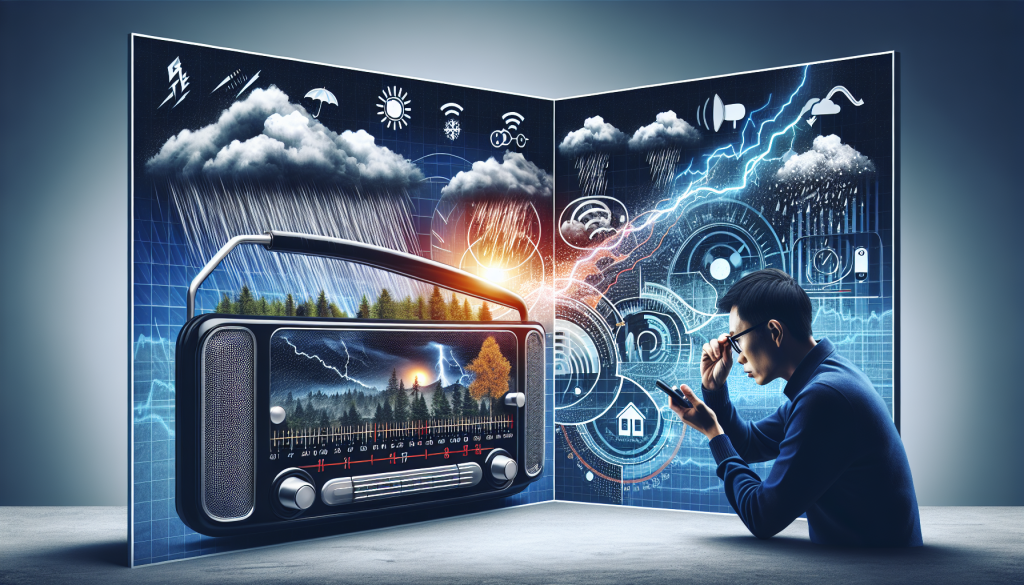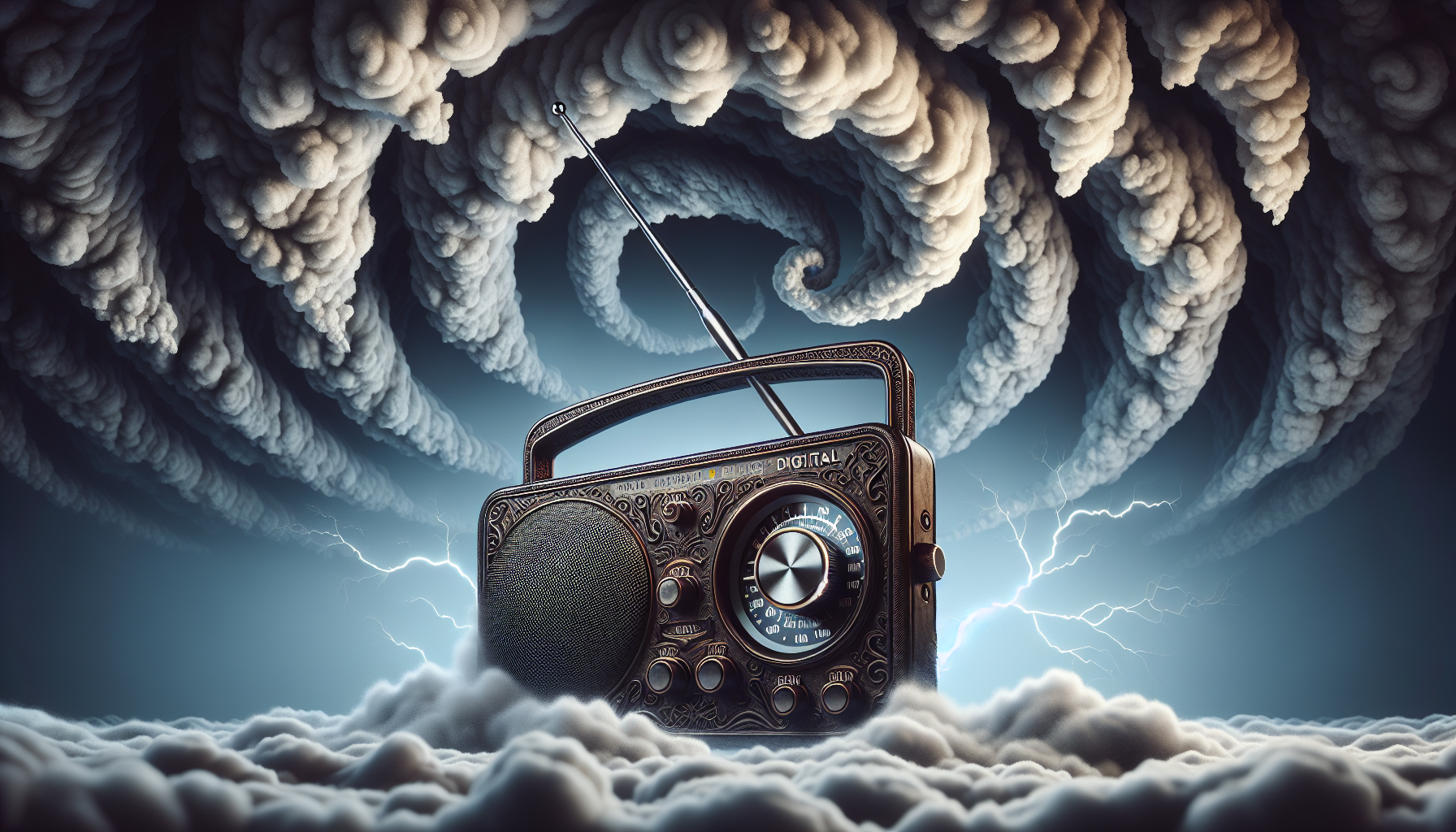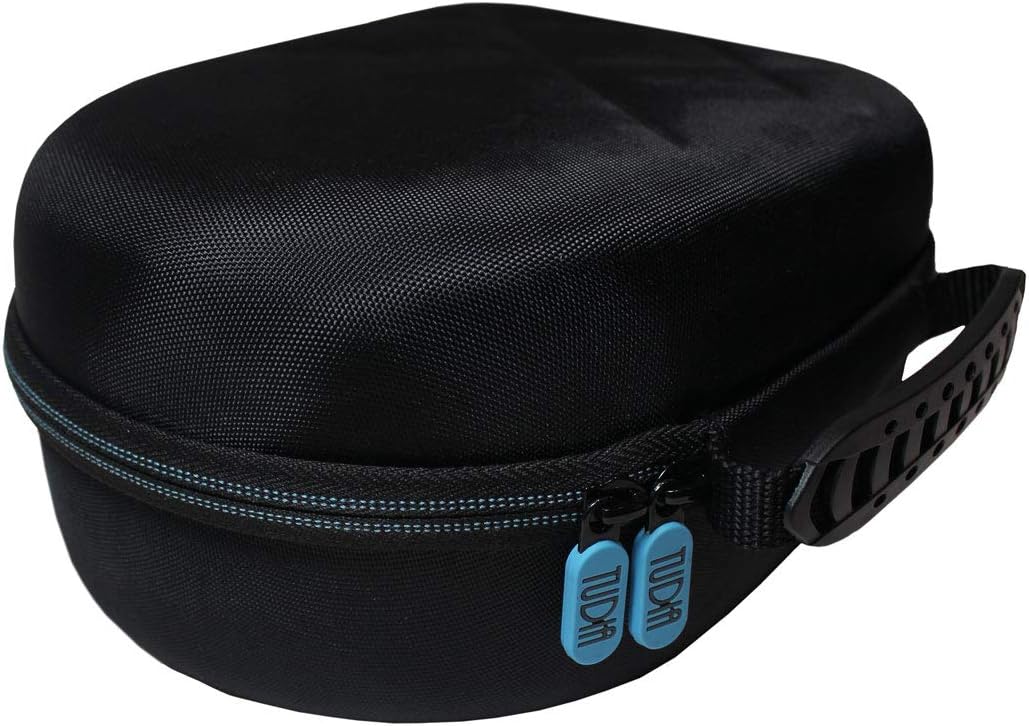Influence of Weather Conditions on DAB Radio Reception
The article titled “The Influence of Weather Conditions on DAB Radio Reception” delves into the impact of various weather conditions on the reception quality of DAB radios. It explores how factors such as rain, snow, thunderstorms, and even sunspots can affect the strength and clarity of the radio signals, leading to potential disruptions in audio quality.
By examining the correlation between weather conditions and radio reception, this article aims to provide insights into the challenges faced by DAB radio users in different weather scenarios, helping them better understand the potential limitations and adjust their expectations accordingly.

Understanding DAB Radio Reception
DAB (Digital Audio Broadcasting) radio is a method of transmitting radio signals digitally, providing listeners with improved audio quality and a wider range of available stations compared to traditional analog radio. DAB radio reception allows for a more reliable and consistent broadcast signal, but there are several factors that can affect its overall quality.
What is DAB Radio?
DAB radio, also known as digital radio, is a broadcasting technology that allows for the transmission of audio signals in a digital format. Unlike traditional analog radio, which uses frequencies to carry audio signals, DAB radio converts audio into digital data and transmits it as a series of 1s and 0s.
DAB radio offers listeners a greater variety of stations to choose from, as well as enhanced audio quality, with less background noise and interference compared to analog radio. It also provides additional features like the ability to display song titles and artist information on compatible receivers.
How Does DAB Radio Reception Work?
DAB radio reception relies on a network of transmission towers that broadcast digital signals. These towers emit radio waves that carry the encoded audio data, which can then be received by DAB radios equipped with the necessary hardware and software to decode the signal.
When a DAB radio is tuned to a particular station, it searches for the corresponding digital signal and locks onto it. The radio then decodes the signal, converting the digital data back into audio that can be heard through the speaker or headphones.
To ensure optimal reception, it is important to have good signal strength and clarity. However, various factors can influence the quality and reliability of DAB radio reception.
Factors Affecting DAB Radio Reception
Several factors can affect DAB radio reception, ranging from physical obstructions to interference from other electronic devices. Understanding these factors can help improve overall reception and ensure a better listening experience.
- Physical Obstructions: Buildings, trees, and other structures can obstruct the radio waves needed for DAB reception. The presence of these obstructions between the transmission tower and the DAB radio can weaken the signal and result in poor reception or dropouts.
- Distance from the Transmission Tower: The distance between the DAB radio and the transmission tower plays a significant role in reception quality. The farther away the radio is from the tower, the weaker the signal strength may be. This can lead to reduced audio quality or complete signal loss.
- Interference from Other Electronic Devices: Electromagnetic interference from nearby electronic devices, such as smartphones, Wi-Fi routers, or even fluorescent lights, can disrupt DAB radio signals. This interference can introduce static, disruptions, or loss of signal integrity.
- Antenna Positioning and Reception: The positioning of the radio’s antenna can greatly impact reception quality. Ideally, the antenna should be placed in a location with minimal interference and a clear line of sight to the transmission tower. Additionally, using an external or amplified antenna can help improve reception in areas with weak signal strength.
- Weather Conditions: Weather conditions can also have an impact on DAB radio reception. Certain weather phenomena, such as rain, heavy snow, or atmospheric conditions, can cause signal attenuation or scattering, leading to degraded reception. Understanding the correlation between weather conditions and radio signals is crucial for maintaining reliable reception.
Weather Conditions and DAB Radio Reception
Overview of Weather Conditions
Weather conditions can vary significantly and have different effects on DAB radio reception. Understanding these conditions can help identify potential reception issues and find ways to mitigate their impact.
Weather conditions encompass a wide range of atmospheric phenomena, including temperature, humidity, wind, and precipitation. These conditions can vary from region to region and can change rapidly, potentially affecting DAB radio reception in different ways.
Correlation Between Weather and Radio Signals
Weather conditions can impact DAB radio reception through the attenuation and scattering of radio waves. Attenuation refers to the reduction in signal strength as radio waves encounter obstacles or atmospheric phenomena, while scattering occurs when radio waves are redirected in various directions due to the interaction with moisture or other particles in the atmosphere.
Rain, for example, can cause signal attenuation as the water droplets in the atmosphere absorb and disperse the radio waves. The heavier the rainfall, the more pronounced the attenuation effect becomes. Similarly, snowfall can also lead to reduced signal strength, particularly in cases of heavy snow accumulation.
In addition to attenuation, certain atmospheric conditions, such as temperature inversions or atmospheric ducting, can cause signal scattering. These phenomena can divert radio waves away from their intended path, leading to reflections and interference that can impact DAB radio reception.
Specific Weather Conditions and Their Effects on DAB Radio Reception
Different weather conditions can affect DAB radio reception in specific ways. Here are some examples of how certain weather conditions can impact reception:
- Rain: Moderate to heavy rain can cause signal attenuation, leading to reduced signal strength and potential dropouts. It is particularly important to note that rain can have a more pronounced effect on DAB radio reception compared to analog radio due to the way digital signals are transmitted and received.
- Snow: Snowfall, especially heavy snow accumulation, can lead to similar reception issues as rain. The moisture content in the snow can attenuate the radio waves, reducing the signal strength and causing potential disruption.
- Fog: Thick fog can also impact DAB radio reception by causing signal attenuation. The water droplets in the fog can scatter and absorb the radio waves, resulting in weakened signals and potential dropouts.
- Thunderstorms: Thunderstorms can introduce various atmospheric phenomena that can affect DAB radio reception. Lightning strikes can generate electromagnetic interference, while atmospheric instability can cause signal scattering and interference.
- Temperature Inversions: Temperature inversions occur when a layer of warm air sits above a layer of cooler air near the ground. This inversion can trap radio waves within the lower layer, causing signal degradation and reduced reception quality.
By understanding the specific effects of these weather conditions on DAB radio reception, listeners can better anticipate and manage potential reception issues. Taking steps such as improving antenna positioning, using external antennas or amplifiers, or seeking alternative transmission towers can help mitigate the impact of adverse weather conditions on DAB radio reception.
In conclusion, weather conditions have a significant influence on DAB radio reception. Factors such as physical obstructions, distance from transmission towers, electromagnetic interference, and atmospheric phenomena all play a role in determining the quality and reliability of DAB radio signals. By understanding these factors and their impact, listeners can take appropriate measures to enhance reception and enjoy uninterrupted digital audio broadcasting.





